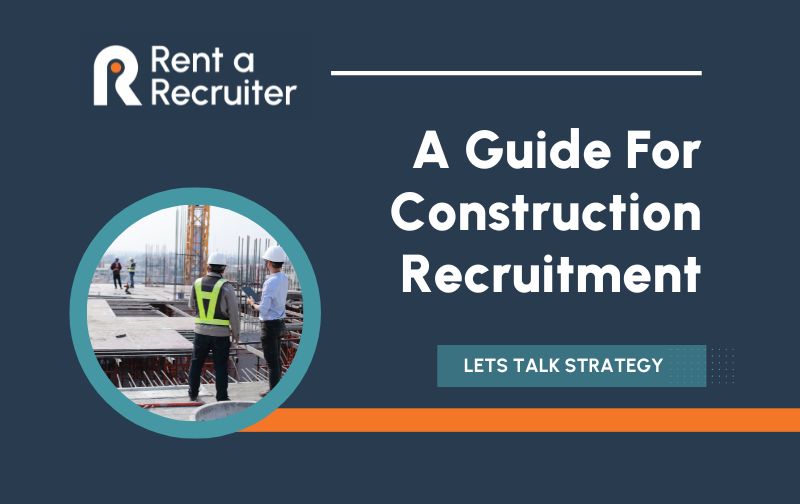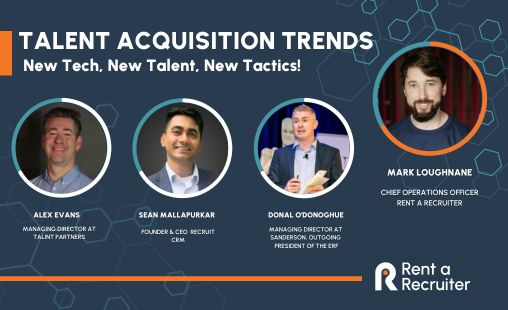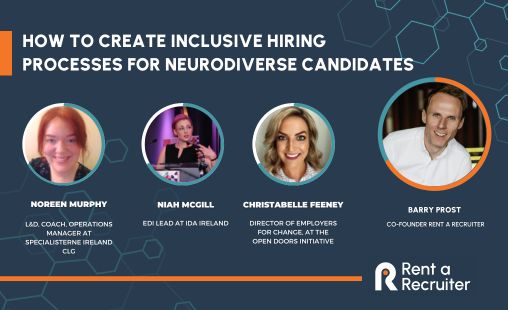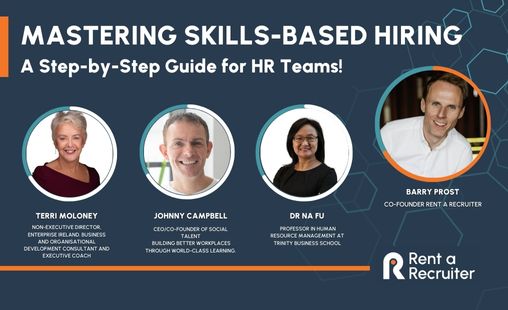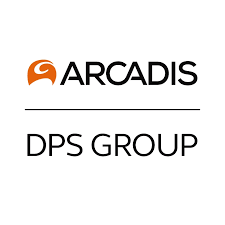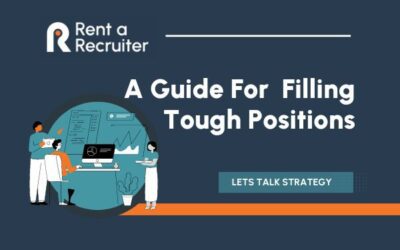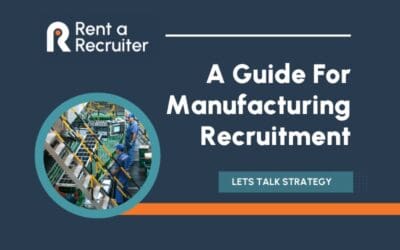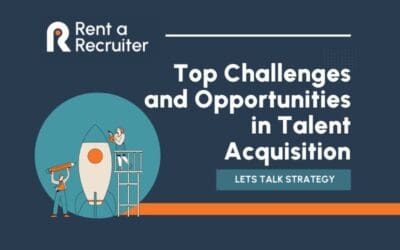Attracting, Retaining, and Upskilling: A Guide to Construction Recruitment
Construction businesses face a dynamic mix of challenges and opportunities, particularly in human resources. The latest Dublin Chamber Business Outlook Survey from the fourth quarter of 2023 highlights staff attraction, retention, and upskilling as top priorities for various sectors. The construction industry, employing a significant chunk of the workforce and crucial to our national economy, feels these priorities keenly.
The National Skills Bulletin reports that the sector employs 145,000 individuals, making up 5.7% of the total workforce. With government initiatives set to expand housing and boost climate action, the demand for skilled workers in construction will only grow.
Employers in the construction sector are now stepping up with innovative recruitment strategies tailored to meet today’s job market demands.
This article dives into six key recruitment trends shaping the construction industry in 2024. These trends reflect not only the evolving workforce but also broader economic and social shifts influencing recruitment and staff management.
By exploring these trends, their associated challenges, and strategic recommendations, we provide a roadmap that construction businesses can use to boost their recruitment efforts and manage their workforce more effectively. This focus is crucial to stay competitive and achieve long-term success in a rapidly evolving industry landscape.
Key Recruitment Trends in Construction
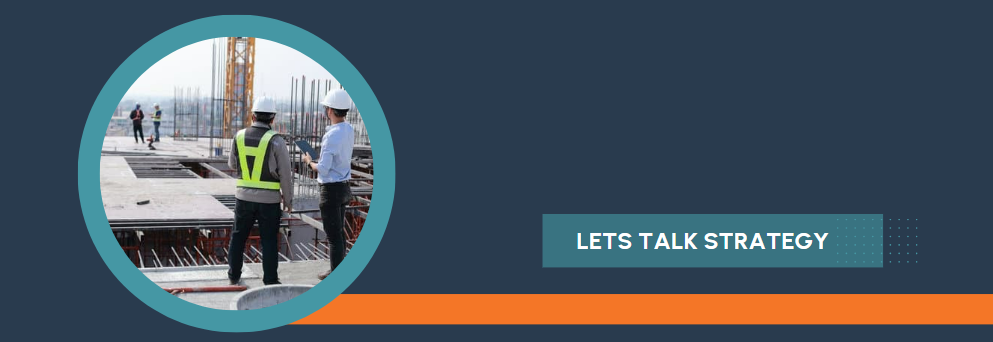
Trend 1: Integration of AI and Automation in Construction
With 74% of hiring professionals looking to automate repetitive tasks, AI in recruitment is set to boost efficiency and strategic focus. Generative AI, in particular, promises to streamline sourcing and engaging candidates, making the recruitment process much smoother.
AI examples in Construction:
- Automated Candidate Screening: Many construction companies are using AI-powered tools to automatically screen resumes and applications. These tools assess the relevance of candidates’ skills and experience in relation to specific job requirements, significantly speeding up the hiring process.
- AI in Project Management: AI is also being used to improve project management in construction. AI algorithms can predict project risks, automate task scheduling, and optimise resource allocation, which helps in efficient project execution.
Trend 2: Demand for Hybrid/Flexible Working Arrangements
The quest for a better work-life balance has never been stronger. Studies by Gartner and Trinity College Dublin show that 59% of candidates would choose flexible working conditions over a 10% pay rise. This highlights the crucial role of hybrid work environments in attracting top talent.
Hybrid Flexibility examples in Construction:
- Remote Project Monitoring: Construction companies are implementing technologies that allow project managers to monitor job sites remotely. This flexibility means that managerial staff can work from different locations, reducing the need for constant site presence.
- Flexible Hours: Options include flexible working hours to accommodate the personal needs of their employees, such as varying start and end times, which can help in balancing work and personal life, making the company more attractive to potential hires.
Trend 3: Growing Emphasis on DEIB Values
Diversity, Equity, Inclusion, and Belonging (DEIB) are now more important than ever in the job market. Two-thirds of job seekers favour companies with inclusive cultures, and organisations that overlook DEIB are likely to struggle in attracting diverse talent.
DEIB examples in Construction:
- Inclusive Recruitment Policies: Construction companies are actively developing policies to enhance diversity in their workforce. This includes targeted outreach and recruitment drives in communities that have historically been underrepresented in the industry.
- Training and Awareness Programs: Many conduct regular training and awareness programs to foster an inclusive culture that respects and values diversity at all levels of the organisation.
Trend 4: Enhancing the Candidate Experience (CX)
A positive hiring experience can significantly elevate a company’s ability to attract top talent. From simplifying application processes to introducing feedback mechanisms, improving the candidate journey is key to better hiring outcomes.
Candidate Experience examples in Construction:
- Streamlined Application Processes: Simplifying the application process, such as reducing the number of steps to apply or improving the user interface of application portals, can enhance the overall candidate experience.
- Feedback Mechanisms: Offering candidates feedback after interviews, even if they are not selected, can improve the perception of the company and increase the likelihood of candidates reapplying or recommending the company to peers.
Trend 5: Shift Towards Skills-Based Recruitment
With 90% of companies recognising the importance of skills-based hiring, this approach is redefining recruitment strategies. Focusing on skills over just educational qualifications helps companies match candidates more effectively with job demands.
Skills-based examples in Construction:
- Skills Assessments: Instead of focusing solely on academic qualifications or previous job titles, many construction companies now include practical skills assessments as part of their hiring process to directly evaluate the abilities of candidates.
- Digital Badges and Micro-Credentials: Encouraging existing employees to acquire digital badges or micro-credentials that certify their skills in specific areas is another trend. This approach allows for a more flexible and continuous skills development framework.
Trend 6: Strengthening Employer Branding
A strong employer brand is vital to attract and retain top talent. Companies must ensure their values and culture resonate with prospective employees to boost their attractiveness as employers.
Employer branding examples in Construction:
- Showcasing Company Culture: Construction companies are increasingly using their websites and social media platforms to showcase their work culture, community involvement, and employee satisfaction stories. This helps in building a strong employer brand that resonates with potential candidates.
- Employee Testimonials: Using testimonials from current employees about their positive experiences working for the company can also help attract talent by providing real-life endorsements of the company’s values and culture.
The construction industry faces unique challenges, including talent shortages, integrating technology and the continuous need for skills development. Take a look at our step by step plan which outlines challenges and actions that can be taken to embrace these trends and improve your talent acquisition efforts.
Step by Step Plan for HR Teams
Step 1: Embrace Digital Tools and AI
Challenge: Integrating new technologies into traditional recruitment processes.
Actions:
Identify repetitive tasks within the recruitment process that can be automated, such as resume screening and initial candidate communications.
Partner with technology providers to implement AI-driven tools tailored to your needs.
Train HR staff on how to use these tools efficiently and integrate them into their daily workflow.
Step 2: Implement Flexible and Hybrid Work Models
Challenge: Adapting to changing work preferences for better work-life balance.
Actions:
Survey current employees to understand their preferences for flexible work arrangements.
Develop policies that offer flexible working hours and the possibility of remote work where feasible.
Promote these policies in job postings and during interviews to attract candidates seeking flexibility.
Step 3: Strengthen DEIB Initiatives
Challenge: Building a diverse and inclusive workplace.
Actions:
Review and revise job descriptions to ensure they are inclusive and appeal to a diverse candidate pool.
Implement bias training for hiring managers and recruitment teams.
Set diversity hiring goals and track progress towards these objectives regularly.
Step 4: Enhance the Candidate Experience
Challenge: Creating a positive and engaging recruitment experience.
Actions:
Streamline the application process to reduce complexity and time-to-apply.
Establish clear communication lines with candidates throughout the recruitment process, including status updates and feedback.
Regularly gather feedback from candidates and use this data to improve the recruitment process.
Step 5: Adopt Skills-Based Hiring into Recruitment Strategy
Challenge: Focusing on skills and competencies over traditional qualifications.
Actions:
Develop a skills framework that clearly defines the skills required for different roles within the company.
Incorporate skills assessments into the interview process to objectively evaluate candidates.
Offer training programs to help existing employees upgrade their skills, thus aligning internal talent pools with current industry demands.
Step 6: Develop and Promote a Strong Employer Brand
Challenge: Attracting and retaining top talent through compelling employer branding.
Actions:
Create content that highlights the company’s culture, values, and employee success stories.
Use social media and professional networks to distribute this content and engage with potential candidates.
Organise open days and participate in industry conferences to showcase the company’s work and culture.
Step 7: Monitor and Adjust Strategies
Challenge: Keeping recruitment strategies aligned with industry trends and business needs.
Actions:
Establish key performance indicators (KPIs) to measure the effectiveness of recruitment strategies.
Regularly review recruitment metrics and gather feedback from new hires and hiring managers.
Adjust strategies based on data and feedback to continuously improve recruitment outcomes.
By following this step-by-step plan, HR professionals in the construction sector can address current challenges.
Our team are available to help you adopt new strategies effectively, ensuring your recruitment needs and expectations of today’s job seekers are satisfied.
Construction Recruitment Partnership Results
Rent a Recruiter partnered with DPS in the US to provide support in sourcing candidates for roles on a major semiconductor site.
The Results:
17 Roles, 2,663 candidates reached, 78 candidates interviews, 54 candidates submitted to DPS USA.
Author: Barry Prost, Chair & Chief Strategy Officer
Barry Prost has 20 years experience in international recruitment and has co founded award winning brands in the sector including Propel Consult, Yala Consult, and now Rent a Recruiter, whose mission is to be a leading international, technology lead, embedded recruitment services provider with operations in Ireland, United States, Middle East and Australia.
BOOK A DISCOVERY CALL
Lower Your Cost and Time to Hire with Rent a Recruiter Today

